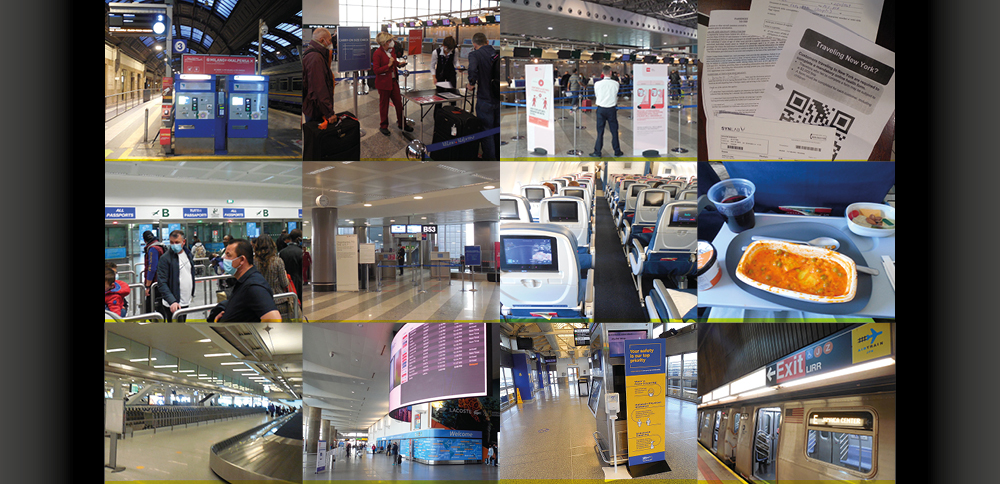By Dom Serafini
The saga to my inbound flight to New York’s JFK airport began at Milan’s Central railroad station, where, in order to board the train to the Malpensa airport (tickets cost 13 euro or U.S.$16, versus a 95 euro flat fee or $115 for a taxi), passengers had to wear facemasks, and show their train tickets, as well as printed self-declarations that they were COVID-free (Photo 1). (To reach my outbound flight from New York’s JFK airport to Rome via train, there weren’t any such requirements, except the facemask, that is.)
Before reaching the Delta desk at Malpensa, masked passengers had to show the results of negative COVID tests that had been taken at least two days before flying (Photo 2). This cost 50 euro ($61 for the result in Italian, extra if written in English). At the Delta counter, agents asked passengers to fill in three forms: One to exit Italy, one to enter the U.S., and a third to leave at the police desk, which was located just before the security check area (Photo 3). A fourth document, a mandatory form for the State of New York, was to be filled out online or risk a $2,000 fine (Photo 4).
After the traditional security check, next came passport control (Photo 5), and then Boarding Gate B53 (the “A” gates are for E.U. flights), where all of our documentation was once again inspected (Photo 6). Onboard, facemasks were mandatory for all passengers. Keeping a safe distance away from other passengers was not a problem since there were just 50 passengers on the A330 plane (which can normally seat 293 people (Photo 7). There were no manual temperature checks, however, we were assured that thermo scanners were scattered throughout the airport for automatic checks.
The plane took off at exactly 10 a.m. and just before flying over Paris, lunch was served: a choice of three-cheese tortellini or chicken. Both came with cheese, a fruit plate, celery tartar, Royal cheese mousse, and ice cream (Photo 8). Alcoholic beverages were served, but passengers could not serve themselves alcohol even if they brought it onboard themselves.
Like the Alitalia flight from JFK to Rome, in order to get tea or coffee after lunch it was necessary to walk to the galley. But unlike Alitalia, Delta had hand sanitizer dispensers by the toilets. In addition, Delta offered mid-flights snacks and sandwiches before landing.
Deplaning was orderly (but different from my Alitalia flight in which passengers could only leave their seats after those sitting in front of them had already left). All other procedures, like passport control and luggage pick-up were conducted in their usual pre-pandemic ways (Photo 9). On the other hand, upon landing in Rome, a rapid COVID test was required. At JFK, there wasn’t any rule or agent requiring this (Photo 10). However, a day after arriving, the NY State Department of Health sent me a reminder via e-mail that “All international travelers with a final destination in New York State must follow CDC guidance for international travel. Therefore, all international travelers must either quarantine for 7 days with a test 3-5 days after travel, or quarantine for the full 10 days without a test. This requirement applies to all international travelers whether they were tested before boarding, are recovered from a previous COVID infection, and are fully vaccinated.”
For traveling to New York City, passengers could board the Air Train for a 20-minute ride to Jamaica station (Photo 11) and from there take the E subway line train for a 40-minute ride to Manhattan (Photo 12). In addition to the low cost (for a single traveler) of $10.50 or 7 euro (versus $71 or 60 euro for a taxi as the ride is a $56.50 flat fee, the tunnel or bridge toll is $6.55, plus an obligatory tip), public transit is more convenient (as you avoid being stuck in traffic) than taxis, except for groups of four people or those with lots of luggage.


Stay home buddy